May 24, 2024
There is something a little…unsettling…about visiting a country whose history includes a war that began and ended during your own early adulthood – a war you were only peripherally aware of through nightly news reports on the TV – at the same time another war is currently raging on this same continent a thousand miles away. While most of the city has been restored, evidence of the Croation-Serbia war that lasted from 1991-1995 is visible in remnants of buildings that used to be or those still riddled with bullet holes. The town we docked in, Vukovar, received the greatest amount of damage, said to be the worst since WWII. It was totally leveled by the bombings; locals call it the Croation Hiroshima.
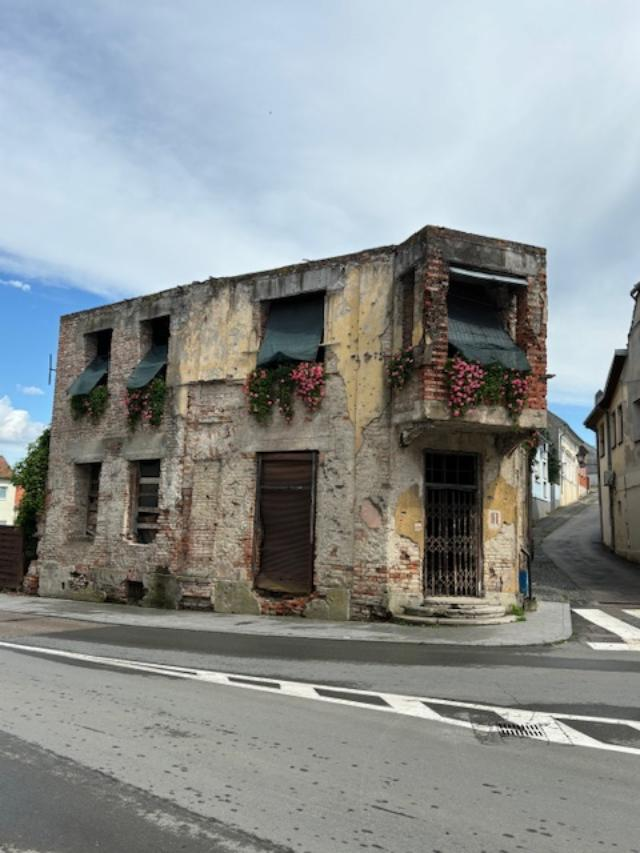

We had the great honor of being hosted in the home of a family in Laslovo, and learned about their way of life before, during and after the war. Ava is the woman in the center front of the group in the photo below, wearing the polka dot top and black pants. She speaks broken English, so her daughter, Valerie, joins her for these visits and does the talking.

Over a homemade marble cake served with delicious apricot preserves and an assortment of homemade brandies we learned that for those of Ava’s generation it is common to have a property the size of theirs, slightly narrow, but very deep, with vegetable gardens and fruit trees, their own smoke house and chickens, and, once upon a time, their own meat and dairy sources as well. Today it is cheaper for them to buy meat at the store than to raise it, but they are still largely self-sufficient. If there is something your neighbor has that you don’t, you simply trade something you have that they would like.
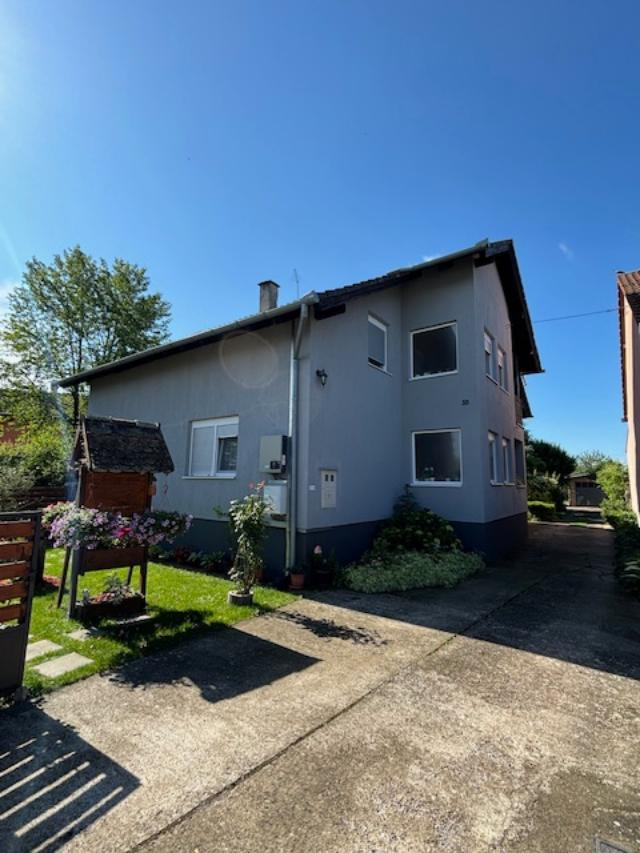
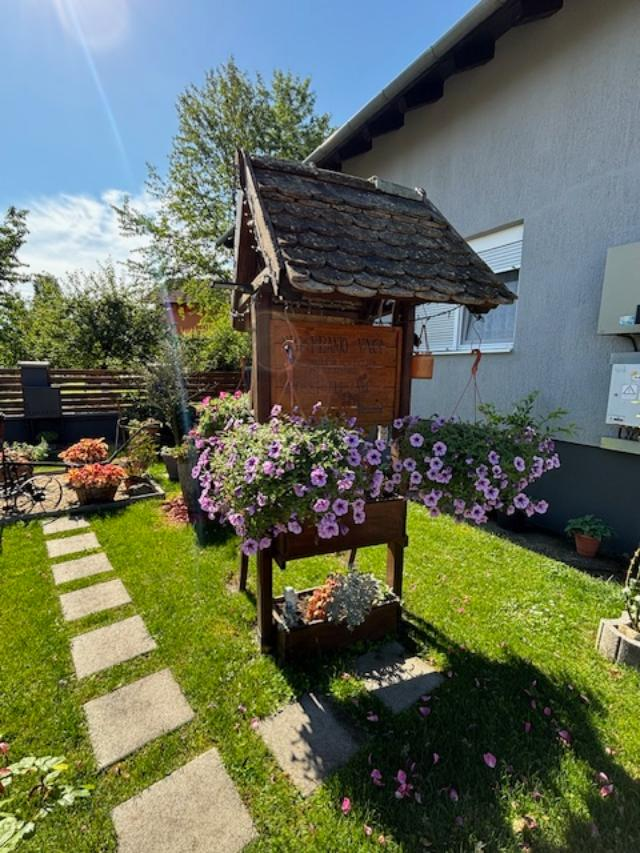
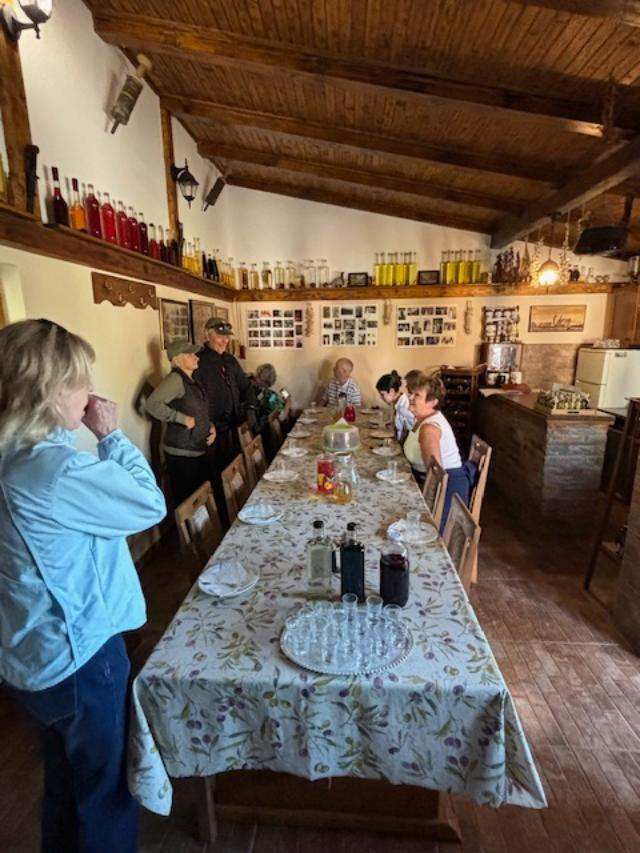
Ava’s garden is beautiful. They also have cherry trees and grow their own grapes. They make their own wine, brandy, preserves. According to Valerie, it was Ava who suggested to her neighbors 18 years ago they should offer these home visits to the people coming in on cruise ships. It could help them economically and give them a forum for sharing their stories of the war in an effort to keep history from repeating itself. Her neighbors thought it was a ridiculous idea – who would want to come? Today, there are 3-4 homes hosting at least two groups of 14-20 people a week for 6-7 months each year.


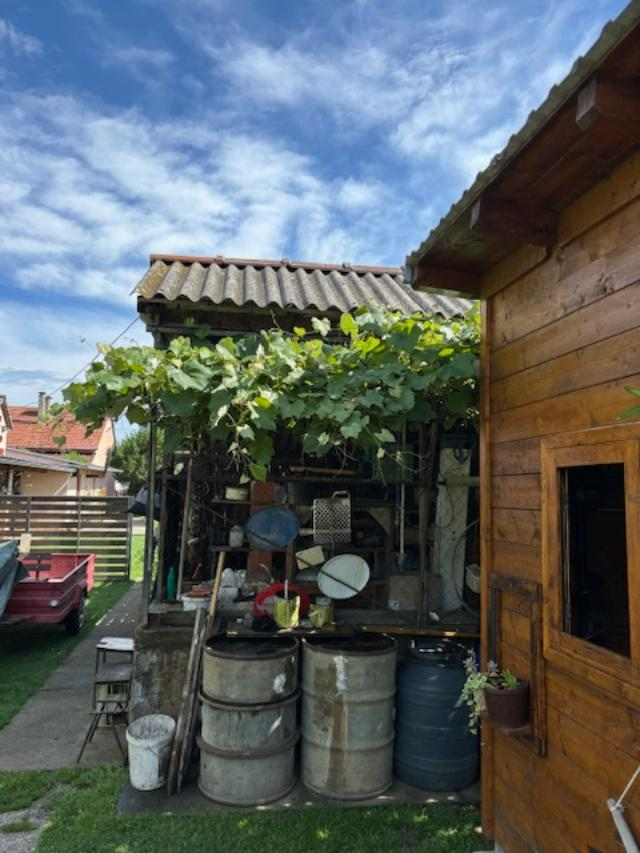
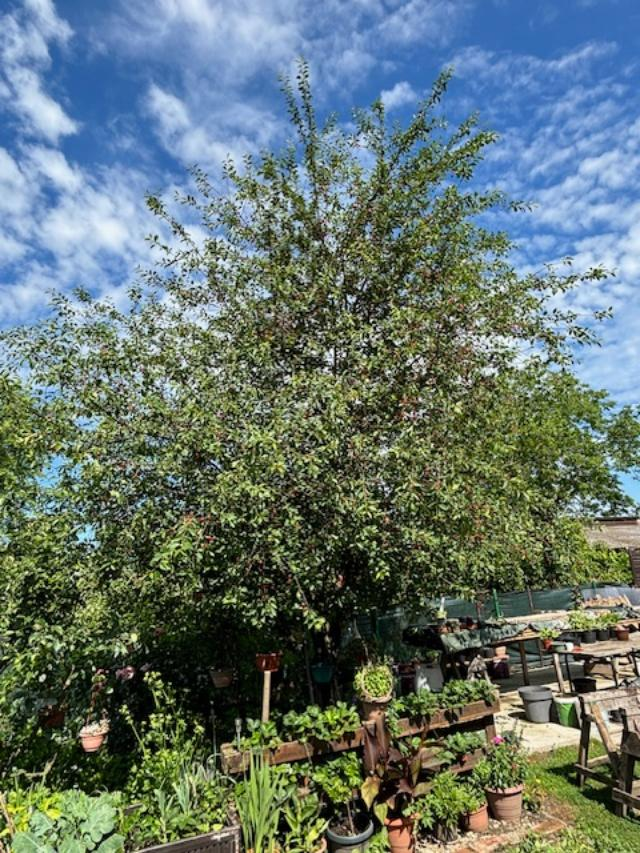
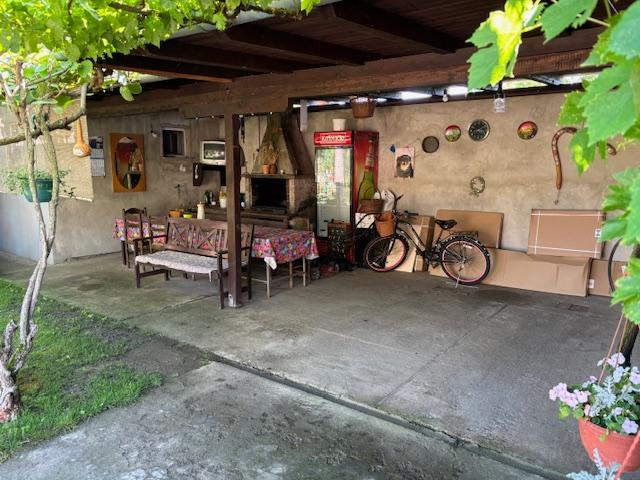
Valerie was seven years old, her brother 5 when one day their Serbian classmates didn’t show up to school. Two days later tanks rolled into town, soldiers entered their school carrying weapons and told the children they had 3 hours to go home, gather their things and get on the buses in front of their homes. Valerie’s dad owned his own textile company, but suddenly he was a soldier. The rest of the family was sent to Hungary, then eventually her grandmother took Valerie and her brother to a town 2-1/2 hours away, where they were considered safe. Their mom moved to another town where she worked and sent money to their grandmother. This was their life for 8 years. When they returned their home had been destroyed and their garden was littered with landmines. Their Serbian neighbors had known this was coming. They had gathered their children and their belongings, marked their homes so they would not be raided, and fled – or stayed to fight against them. The betrayal still stings. Valerie’s father suffers from PTSD, and her husband’s job is to remove landmines. They are still finding them twenty years later; they are especially hard to locate and remove in the forest and mountain areas.
Next up was a visit to the Church of the Virgin Mary, where we were treated to a piano and vocal concert from a young soprano with a beautiful voice. In addition to traditional Croation music she sang songs we knew, like “Amazing Grace” and “Hallelujah,” singing in both Croation and English. It was really nice.



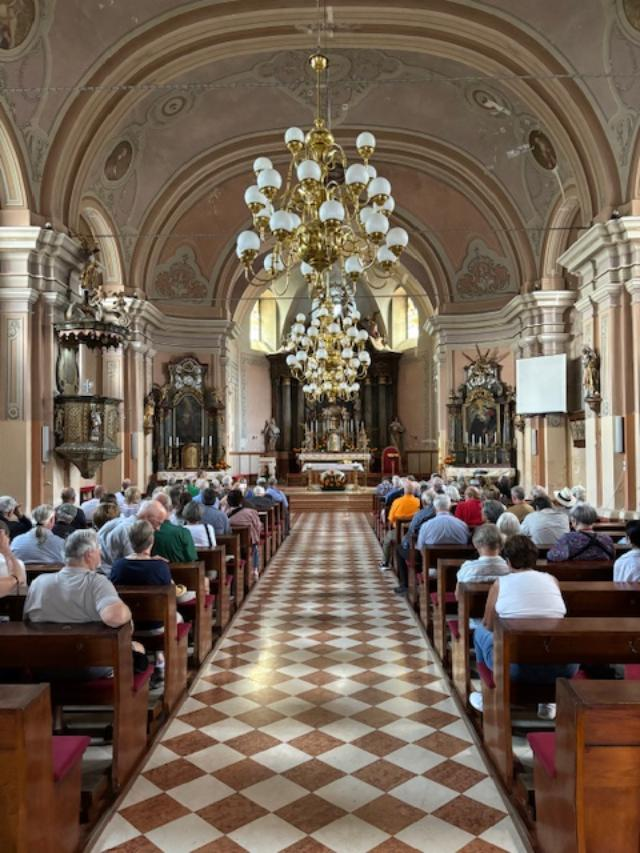
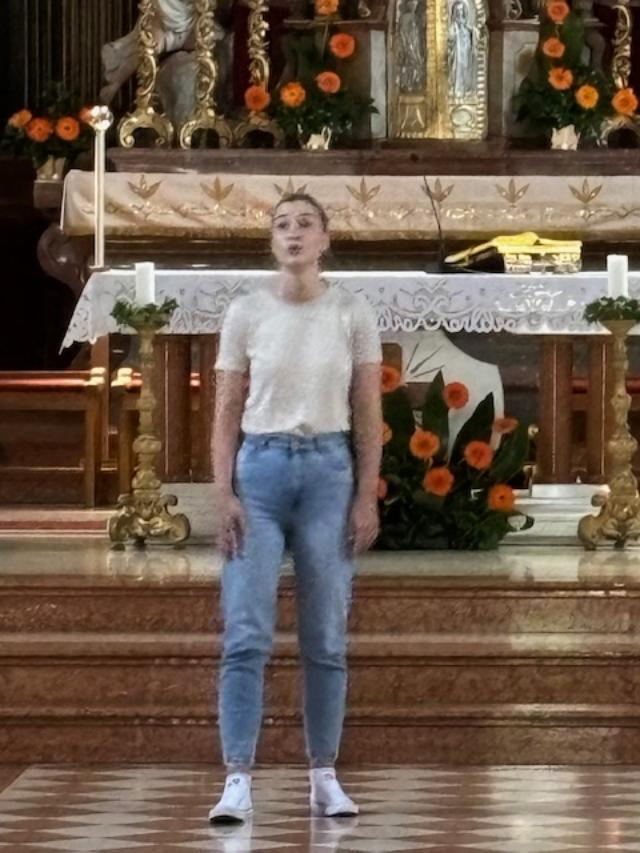
Our final stop was the Old City of Osijek, located in what was once a fort. The fort was built in the years 1687-1715 to protect the town’s strategic position along the River Drava. Today it is Osijek’s administrative, cultural, and educational center. What was once a military hospital now houses the food technology school’s faculty; barracks are now music schools and apartments; the old City Guard is the agricultural school.


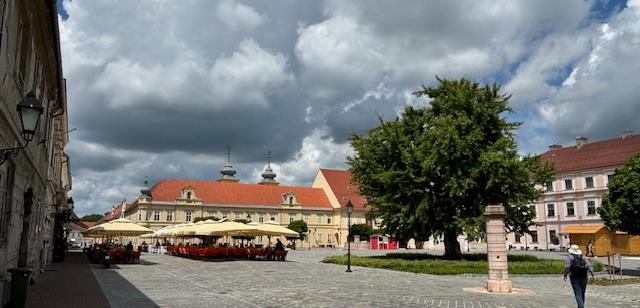
The fort had its own church, still in operation today, and, like so many of the cities we’ve visited before there is a memorial column dedicated to those who died during the Black Plague. The buildings in the far right of the top row are apartments. They’re in serious need of repair, but people are living in them.

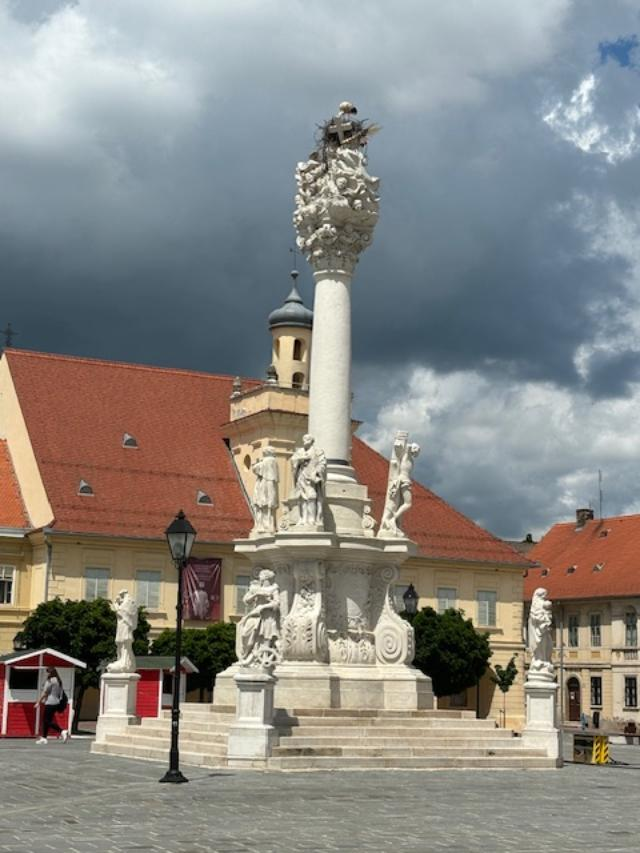


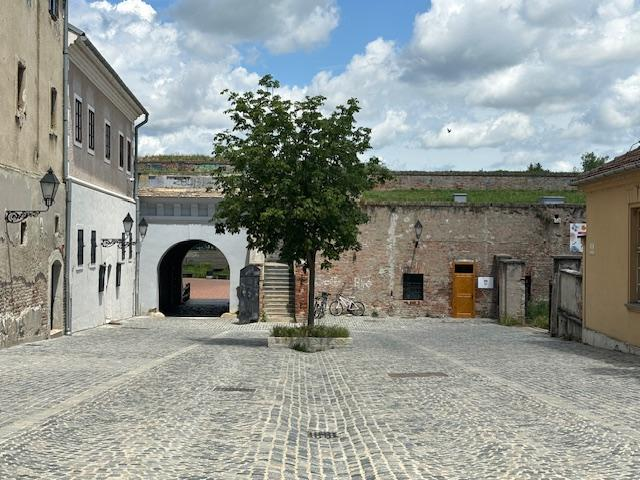
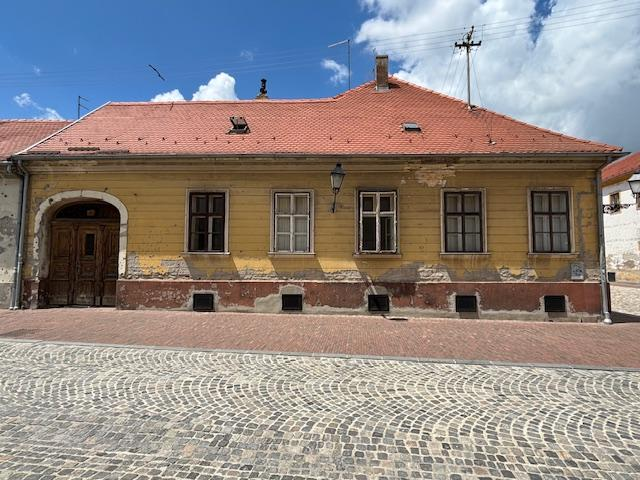
Vukovar and Osijek are also home for many a stork. Their nests are huge. They can weigh up to 120 lbs, and are located on tops of chimneys, city lights, and even the Black Plague monument.
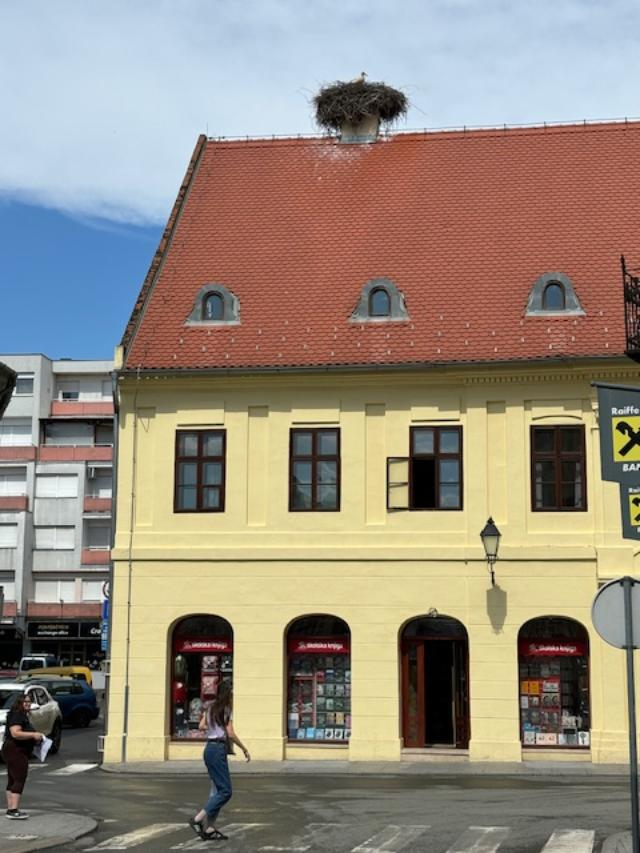
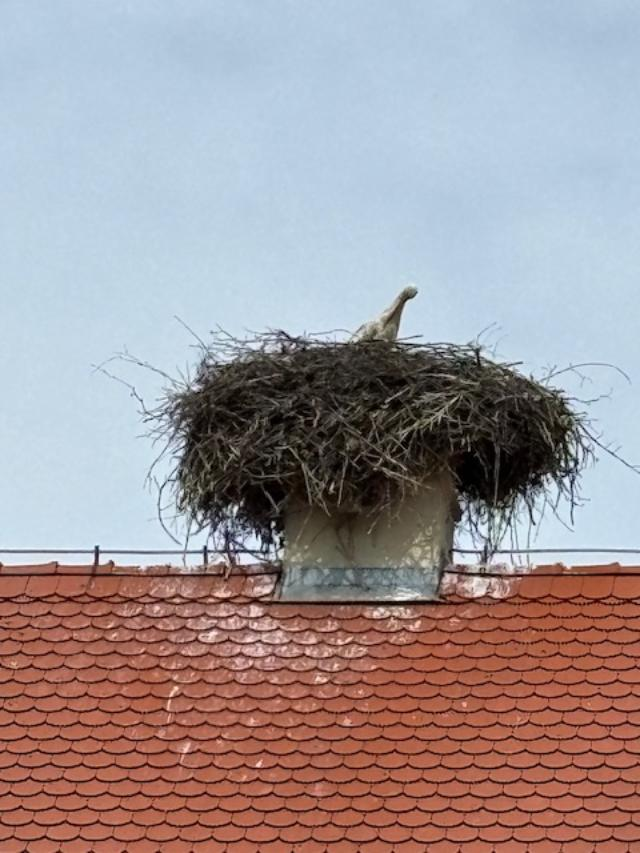
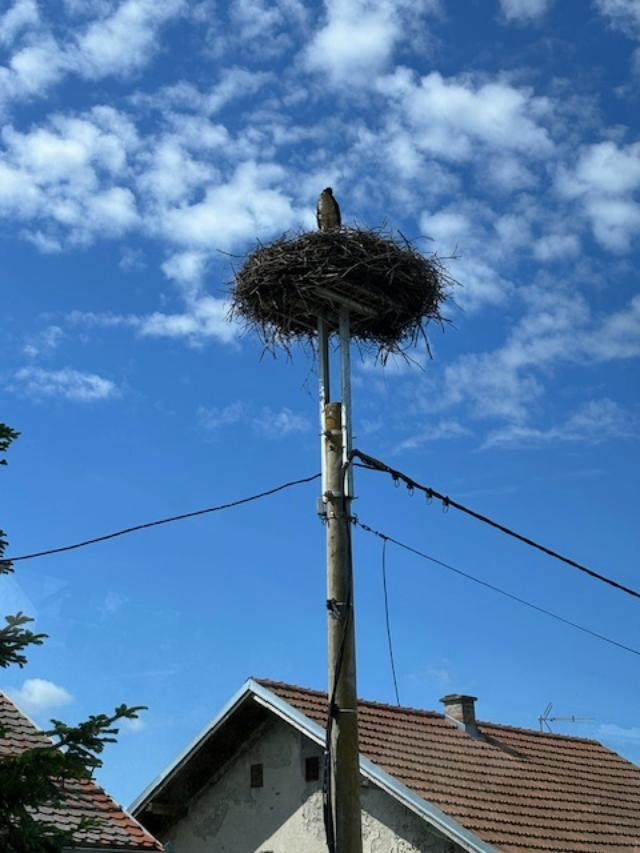
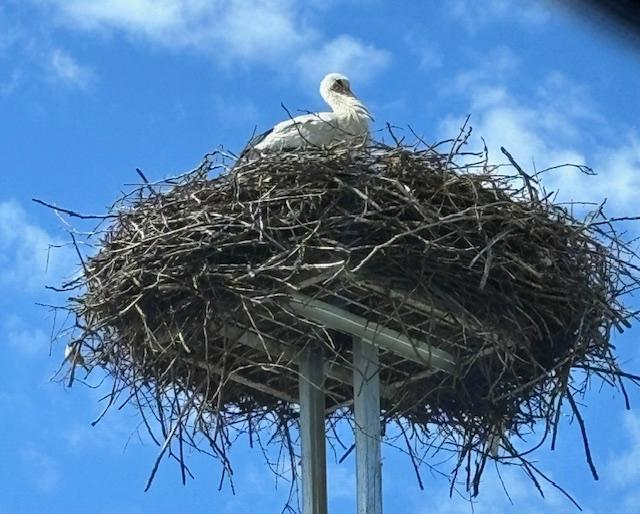
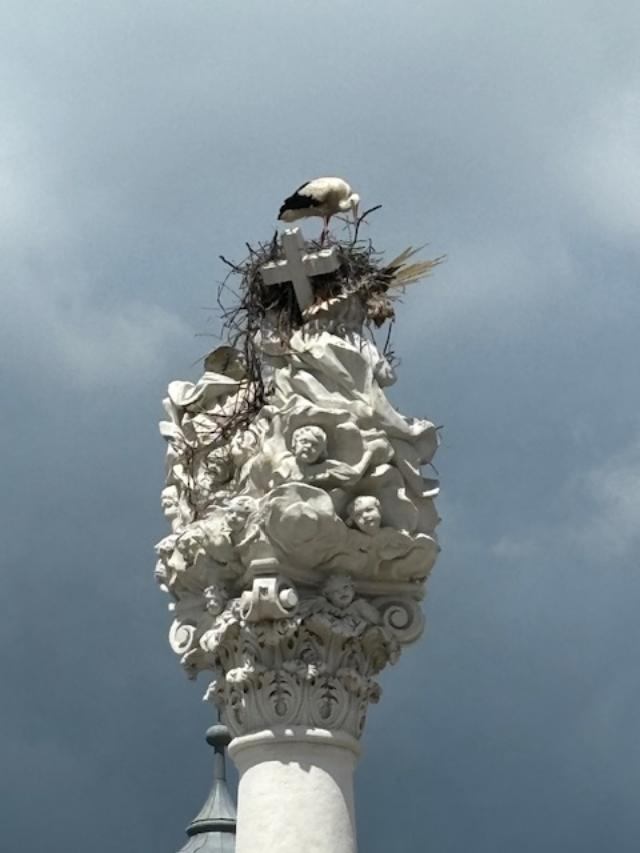
We had the afternoon to explore on our own and found this colorful sidewalk on one of the foot bridges.
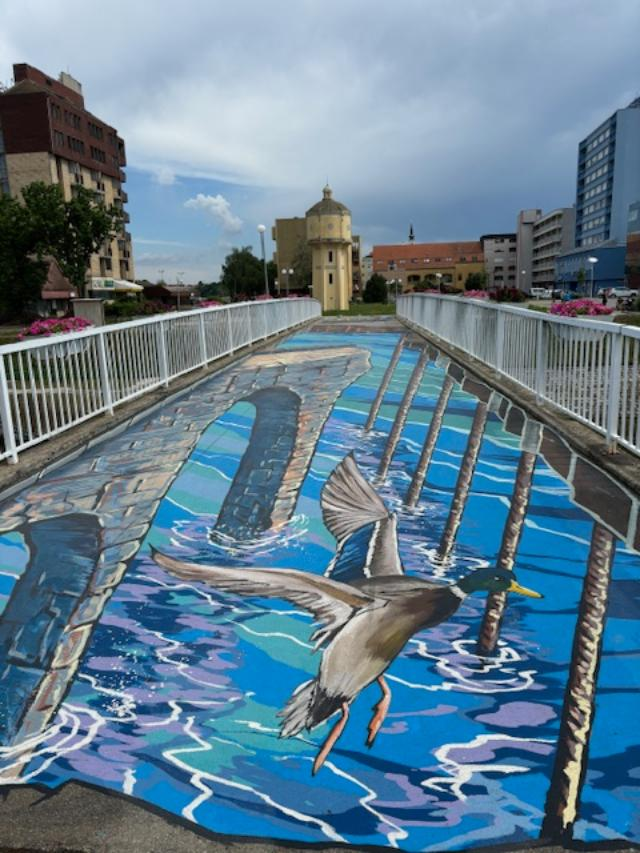
Tomorrow we’ll be in Serbia to hear the other side of the story. Should be interesting.
